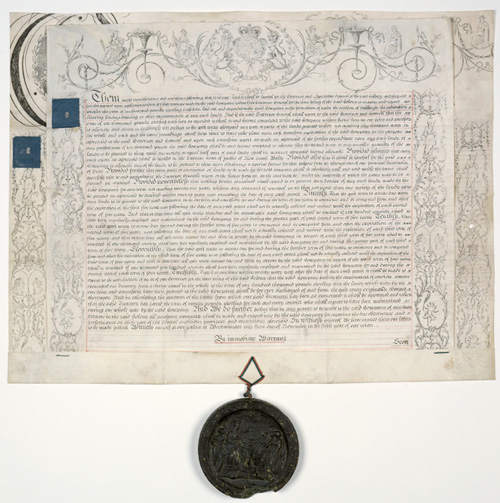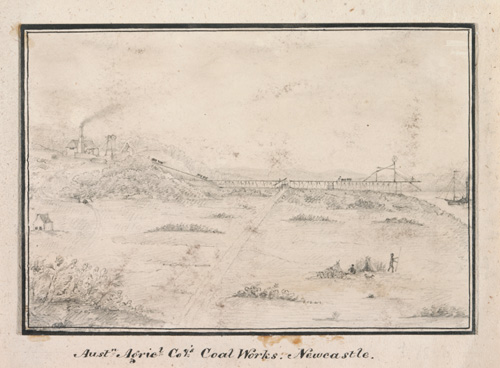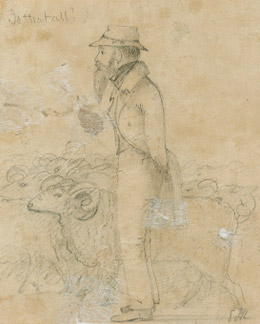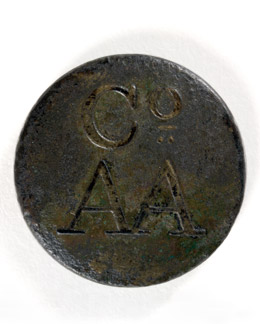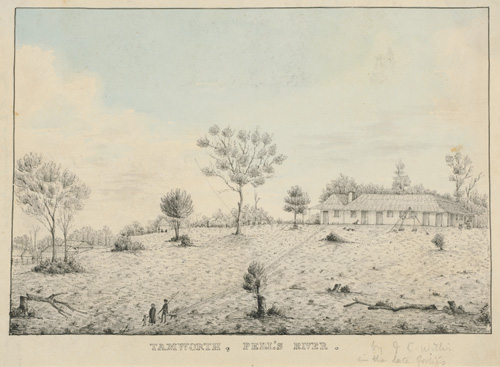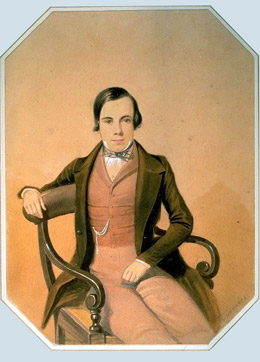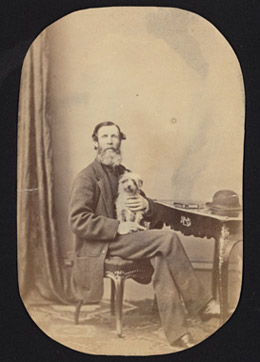Australian Agricultural Company
The Australian Agricultural Company (AACo.) is one of Australia's oldest companies. Established in 1824, by an Act of the British Parliament, it was formed for the purpose of improving flocks of merino sheep for fine wool production, along with tobacco, flax and other crops for export, before moving into cattle farming. The original headquarters of the AACo. was set up on one million acres at Port Stephens, on the NSW north coast.
A colonial advisory committee was formed (comprising Phillip Parker King, James Macarthur, Hannibal Macarthur and James Bowman) to help select the most advantageous site and to which the AACo's local agent reported; the AACo. provided free workers for the colony (at no cost to the government) and employed a large number of convicts.
The AACo.'s Commissioner, Robert Dawson, arrived with the first group of 79 settlers in late 1825, and immediately set out to explore the country around Maitland and Newcastle. Heading northward to Port Stephens in early 1826, he followed the Karuah River and chose the site for the settlement, before the settlers and stock travelled up from Sydney. Five months later a substantial estate had been established and, by October 1826, 1000 head of cattle and 2000 sheep were grazing. Tahlee Homestead was also under construction
 Port Stephens looking East, Tahlee in foreground, c.1827,
Port Stephens looking East, Tahlee in foreground, c.1827, watercolour, Augustus Earle. PXD 265/ f. 7
Under Dawson’s management the number of sheep on the estate rose to 17,459 in just three years. By the time he departed in 1828, leaving his assistant Henry T. Ebsworth in charge, the population at Port Stephens had reached almost 600 with farms and gardens established to provide food as well as 23 stations, all connected by roads, a lumber camp at Booral, a wharf and other buildings.
In the 1830s, James Ebsworth (Henry's brother) was appointed Assistant Commissioner and later Commissioner at Port Stephens, while another brother, Thomas Lindsey Ebsworth, also worked for the AACo. At this time, principal crop production and settlement at Port Stephens centred around the Ebsworth residence, Booral House, which was described by J. D. Lang during a visit in 1851:
'The Commissioner's cottage is beautifully situated on a natural terrace overlooking the river and the cultivated land; and everything about it indicates the residence of an English gentlenman of refined taste and in affluent circumstances...'
> See images of life on the AACo estate at Port Stephens
In the late 1820s, the AACo. took up an additonal grant of 2000 acres of land at Newcastle with the intention of mining coal. In 1830 the government handed the Newcastle Coal Works over to the AACo. seeking to improve the mine's efficiency.
By 1831, the AACo. had begun to monopolise the the coal mining industry in NSW, eventually employing many convicts in this difficult and dangerous work.
> Read a convict's story about the AACo.'s Newcastle Coal Works via the Library's catalogue
Captain Phillip Parker King was appointed AACo. Commissioner from 1839 to 1849, and was the last to live at Tahlee House on the Port Stephens' Carrington Estate. By this time, the AACo.'s directors had realised that the greater portion of the Port Stephens grant was unsuitable for grazing merino sheep which were sold off in favour of cattle breeding.
In 1833 the company was granted replacement land parcels in two new areas on the Liverpool Plains. These included the Warrah Estate of 249,600 acres (1,010 km2), west of Murrurundi, NSW, and the Goonoo Goonoo Estate of 313,298 acres (1,268 km2) along the left bank of the Peel River, to the south of present-day Tamworth.
Anticipating a tide of emigration to New South Wales following the end of transportation, the AACo. decided to sell off parts of its land grant and a prospectus for 'The Port Stephens Colony' appeared in 1849.
> Read about the plan to sell the Port Stephens estate to emigrant farmers
The AACo.'s increased profits after 1857 can be credited to the appointment of two capable managers: Philip Gidley King, the Younger (1817-1910) and Edward C. Merewether (1820-1893).
P.G. King studied the handling of livestock in the Murrumbidgee region before entering the service of the AACo. in 1842. Discovery of gold at Peel River in 1852, encouraged the AACo. to form the Peel River Land and Mineral Co. with King as NSW manager of the new company. Moving with his family to the Goonoo Goonoo Estate, King began a line of hereditary managers at the station which lasted until the 1920s. Almost a village by the 1870s, with its elaborate station homestead, post office, school, numerous cottages for employees, accommodation house and woolshed, in 1881 George Bartholomew Gidley King (1846-1910) took over management of the station from his father.
E.C. Merewether became general superintendent of the AACo. in 1861, moving to Newcastle where he restored the company's fortunes there by overcoming labour troubles in the coal mines. The gold rushes had also denuded NSW of shepherds and stockmen. Merewether's good management and close supervision of the company's large stations saw many improvements; such as installation of the sheep-washing pool and pump at Warrah and subdivision of the the AACo.'s sheep runs with wire fencing to lower labour costs.
From the 1890s, the closer settlement movement spelt the end of large-scale pastoraliasm in eastern NSW and, following government resumption of the Goonoo Goonoo and Warrah Estates in 1909 and 1910, and the AACo. turned its attention to the northern states and cattle farming. Today, the AACo. is Australia's largest cattle producer holding seven million hectares of land across Queensland and the Northern Territory.
